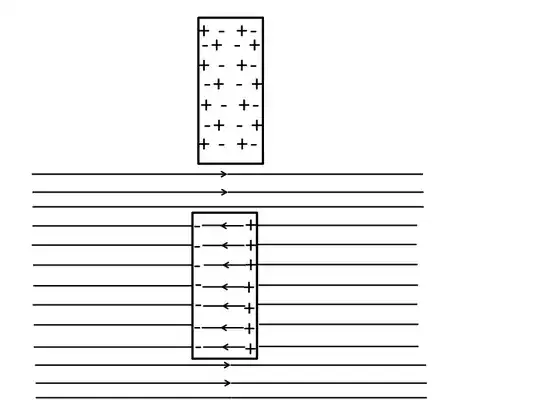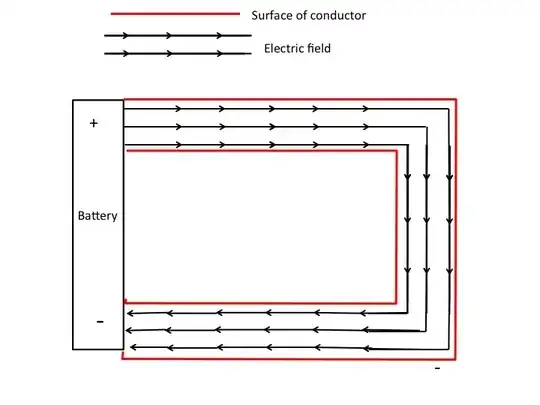Why will the charges accumulate on surface of the wire although the
field is parallel to that surface? Why can't it be just volume charge
driving the field in wire?
Regardless of the direction of the electric field with respect to the direction of the conductor, electrical charge will accumulate on the surfaces of the conductor if they have nowhere else to go. This is the case if a conductor is isolated in space. If the conductor is part of a circuit with a source of EMF it need not accumulate. Refer to the diagrams below.
The first diagram below shows a section of an isolated conductor that is not in an electric field (top diagram), and the same section of isolated conductor placed in an electric field perpendicular to the conductor. By convention the direction of the electric field is the direction of the force that a positive charge would experience if placed in the field. Note that electrons move to the left surface of the conductor, being attracted by the field, leaving the right surface positively charged, as the charge has nowhere to go. The electric field produced in the conductor due to the movement of charge is equal and opposite to the external applied electric field so that the net field inside the conductor is zero.
The bottom diagram shows a conductor connected to a battery to form a complete circuit. The battery produces an electric field inside and parallel to the conductor. Electrical charge is therefore free to move in the conductor from one battery terminal to the other, instead of accumulating. By convention, current is the flow of positive charge. So positive charge will flow from the positive terminal of the battery to the negative terminal. This is the same as electrons flowing from the negative terminal to the positive terminal. All conductors (except super conductors) have resistance, so the total drop in electrical potential of the charge as it moves through in the conductor due to its resistance equals the increase in potential provided by the battery.
Bottom line: The difference between the top diagram and bottom diagram is in the top diagram the electrical conductor is isolated in space and the charge has no where to go but accumulate to relieve the force due to the external field, whereas in the bottom diagram the conductor is not isolated in space but connected to a source of EMF that takes charge from one end of the conductor and moves the charge to the other end of the conductor.
Hope this helps.



